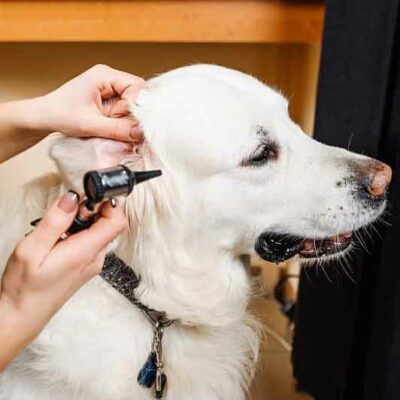 Ear disorders in dogs
Ear disorders in dogs
Experiencing the discomfort of an earache needs no detailed explanation.
Now, picture for a moment that your ear, inflamed and filled with water or wax, cannot be attended to or improved by your own actions. You are unable to articulate your pain or express the need for assistance.
The only recourse is to repeatedly shake your head until someone takes notice, identifies the issue, and provides the necessary care to restore your well-being. Such is the reality for your cherished dog when faced with an ear problem, a condition remarkably common in dogs.
A dog’s external ear canal, where the majority of issues arise, is longer and more vertically oriented than that of a human, making it susceptible to the retention of substances like water.
Moreover, a dog’s ear canal is lined with skin, housing glands and hair follicles akin to the outer skin, rendering the ears prone to the same irritants that affect their paws, legs, back, and head.
Ear infections
If you observe your dog frequently scratching at their ears or displaying persistent head tilting or shaking, it’s advisable to have their ears examined for potential infections.
Additional signs may include fur loss, unpleasant odor, and redness or swelling in the ear canal. Recurrent ear infections may also indicate possible allergy issues.
To prevent ear infections, ensure thorough drying of your dog’s ears after water exposure, regularly use a canine ear cleaning solution, and manage any allergies your pet may have appropriately.
Deafness
Hearing impairment in dogs may arise from acquired or congenital factors.
Acquired deafness can result from chronic infections, the use of specific medications, and most frequently, age-related alterations in the cochlea.
Congenital deafness may be genetic, particularly in dogs with merle or white coats, or it can stem from in utero damage caused by infections or toxins.
Fly strike dermatiti
Fly strike dermatitis manifests at the tips and folds of a dog’s ears, resulting from bites inflicted by the stable fly, Stomoxys calcitrans.


